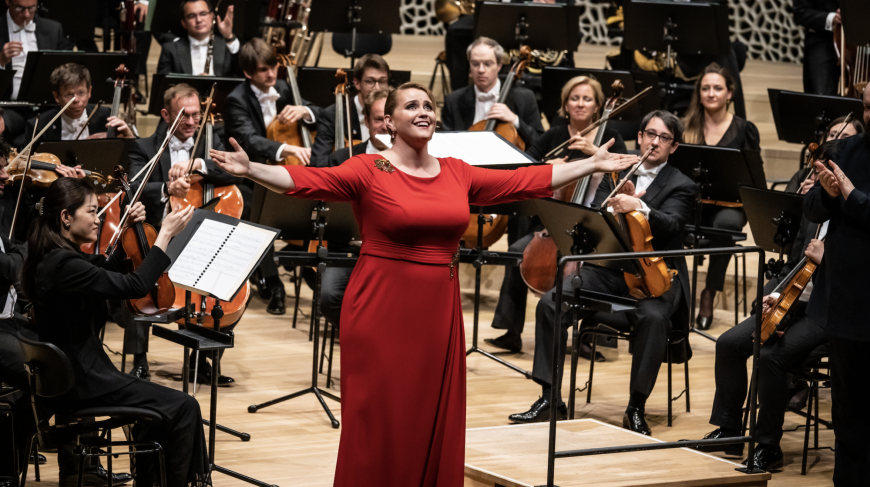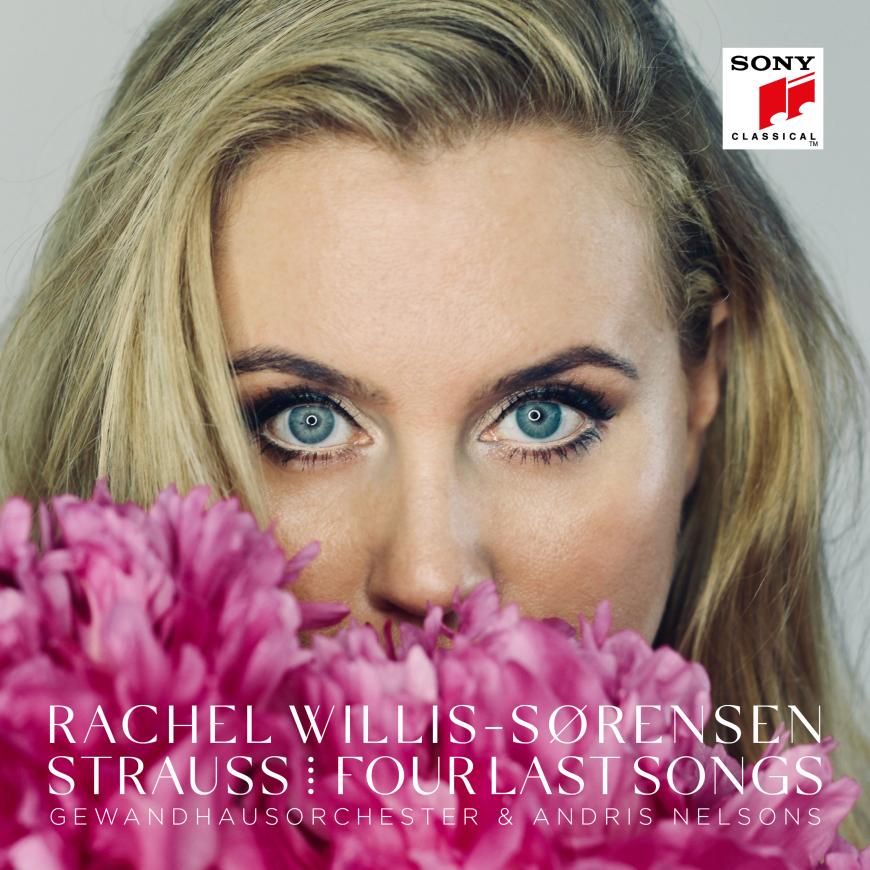
Make room on your CD shelves or your hard drive, Richard Strauss lovers. There’s a new contender for “Best Recording of Four Last Songs.” To versions by Elisabeth Schwarzkopf, Lisa Della Casa, Gundula Janowitz, Jessye Norman (with Kurt Masur, not James Levine), and others must now be added American soprano Rachel Willis-Sørensen’s new Sony recording with the Gewandhausorchester Leipzig under the baton of Andris Nelsons.
The first thing that may strike you about Willis-Sørensen’s performance is the gravitas that she brings to the first of the songs, “Frühling” (Spring), a setting of verse by Hermann Hesse. Its various references to “trees in blossom,” “that fragrant blue and thrushes’ song,” and “life’s own loveliness [and] sweetness” often encourage sopranos to generate the freshest and most youthful tone they can muster. Not Willis-Sørensen, however, who adopts a sober tone that anticipates the possibility that life is not necessarily destined to bloom anew.

According to quotes in Roger Pines’s liner notes, Willis-Sørensen does not consider “Frühling” a simple case of “look at the pretty flowers.” Rather, she believes the song is “full of desperation. It’s the hope that spring maybe will come, but there’s the fear that it won’t. … Instead, it’s very dark, with the thought that ‘I’ve been dreaming so long of things becoming alive again.’”
Even if you never see the liner notes, Willis-Sørensen’s approach to the songs as an orchestral cycle guiding listeners on a path from life to death is palpable. You may notice a slight beat that sometimes surfaces when Willis-Sørensen is not singing full out, and she has an occasional tendency to open into high notes from below, but her singing nevertheless pulls you deep into the glories of Strauss’s music.
Nelsons and his orchestra are anything but mere accompanists. As demonstrated on recording after recording in Strauss, his marvelous orchestral box set for Deutsche Grammophon with the Gewandhausorchester and the Boston Symphony Orchestra, Nelsons relishes the gemütlichkeit (cordiality, good fellowship) inherent in much of Strauss’s music. Listen to how smooth and creamy his orchestra sounds in the second song, “September,” and how lovingly it lingers in the postlude. The horn playing here is anything but routine. Given the Gewandhausorchester’s affinity for Strauss’s music, it’s notable that this is their first recording of the songs since Norman and Masur’s 40 years ago.
Thankfully, digital sound has advanced considerably since then. By all means access the high-resolution download or stream because the sounds Nelsons draws from his orchestra are glorious.
Nelsons begins the third song, “Beim Schlafengehen” (Time to sleep), by encouraging a gorgeous, idiomatic, and lovingly indulgent violin solo. Similarly, he savors every note in the long orchestral opening to the final song, “Im Abendrot” (At dusk). Note how perfectly he and Willis-Sørensen slow down on the phrase “zwei Lerchen nur noch steigen nachträumend in den Duft” (which roughly translates as “two larks only ascend dreaming into the fragrance”). Willis-Sørensen’s softening at song’s end is quite effective.
It’s astounding to compare song timings in some of the top recordings. As slow as this version may seem, it’s due to Nelson’s luxuriant approach rather than to what the clock says. “Frühling,” “September,” and “Im Abendrot” are actually faster than on rival recordings from Lise Davidsen and Jessye Norman; only timings on Schwarzkopf’s first recording, with Otto Ackermann conducting, are faster throughout.
Willis-Sørensen and Nelsons’s take on the closing scene from Strauss’s Capriccio is equally wonderful. Schwarzkopf’s interpretation may be the gold standard, and no one paints words and inflects phrases quite like her. Willis-Sørensen might not possess perfect ease on some of the high-lying phrases, but her top is ideally radiant and the entire approach very different from her interpretation of the Four Last Songs.
Willis-Sørensen and Nelsons’s climactic passages are everything Strauss might have wanted. I’m not going to try to convince anyone who loves Renée Fleming’s closing scene with the Vienna Philharmonic under Christoph Eschenbach that they should change allegiances, but those with open minds and hearts will certainly embrace the beauty on this new album.




